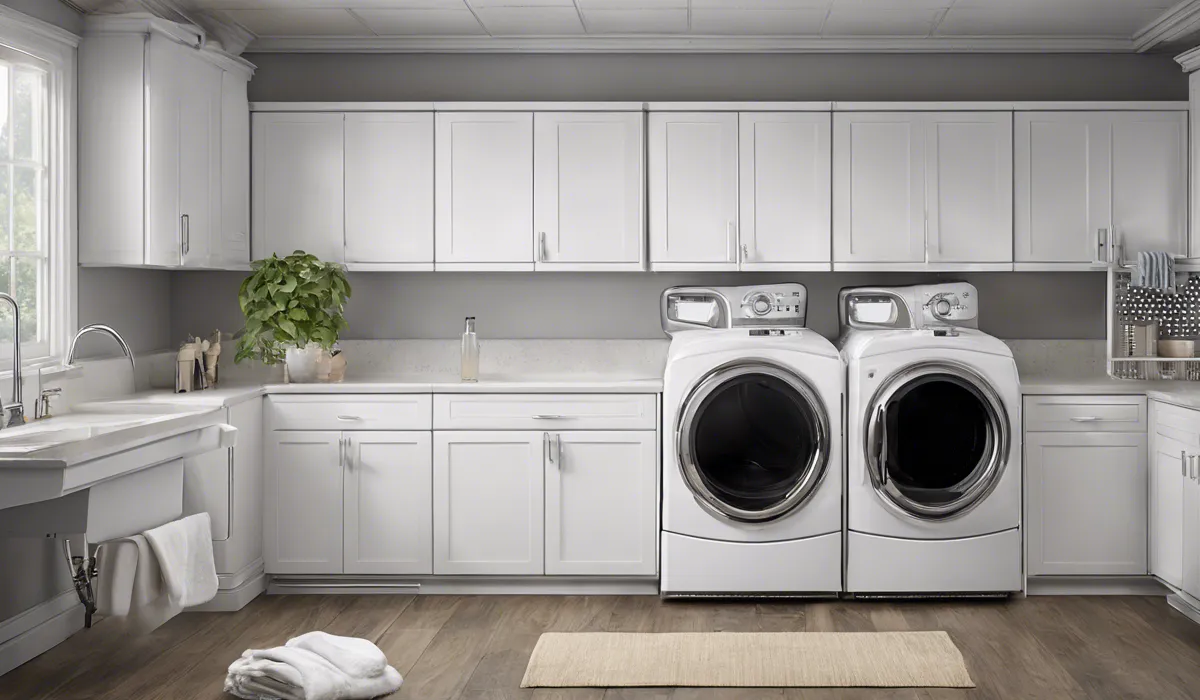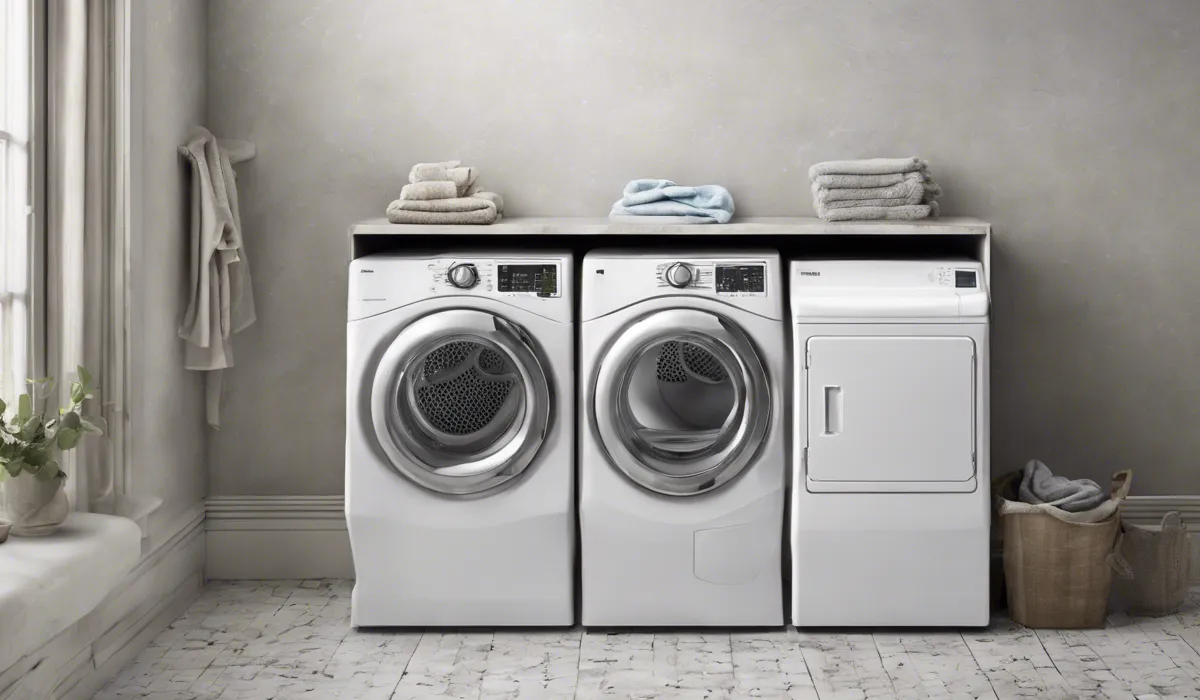Ventless dryers can cause mold if they’re improperly used or maintained, as they emit moisture into the indoor air. Ensuring good ventilation in the laundry area and regular cleaning of the dryer are essential to prevent mold growth.
Understanding Ventless Dryers

What Are Ventless Dryers?
Ventless dryers are a type of appliance used to dry clothes without requiring an external vent.
Unlike traditional dryers that expel moist, hot air through a vent to the outside, ventless dryers recycle the air within the machine.
This design makes them an excellent choice for homes without easy access to external venting options or for those looking to conserve energy.
Types of Ventless Dryers
There are two main types of ventless dryers: condenser and heat pump dryers. Condenser dryers remove moisture from clothes by heating air and passing it through the clothes.
The moist air then goes through a heat exchanger where the moisture condenses into water and is collected in a tank or drained away.
Heat pump dryers work similarly but use a heat pump to reuse the hot air, making them more energy-efficient.
How Ventless Dryers Operate Differently?
The key difference between ventless and vented dryers lies in their use of air. Ventless dryers recycle the air they use, capturing moisture from clothes and then reheating the same air.
Vented dryers, on the other hand, pull in fresh air, heat it, and then discharge it outside along with the moisture from the clothes.
Popularity and Ideal Situations for Ventless Dryers
Ventless dryers have become popular in apartments, condos, and homes where running a vent to the outdoors is impossible or impractical.
They are also favored for their energy efficiency and compact size, making them a go-to choice for small living spaces and for those looking to reduce their carbon footprint.
Mold Concerns with Ventless Dryers

Conditions That Promote Mold Growth
Mold thrives in environments that are warm, dark, and moist. Homes with poor ventilation provide a perfect haven for mold when moisture is present.
This is often seen in areas like bathrooms and kitchens, where humidity levels are typically higher.
Humidity, Warmth, and Mold
The combination of humidity and warmth can create an ideal breeding ground for mold.
In the case of ventless dryers, the moisture emitted into the indoor air can increase the humidity level within the home, potentially leading to mold growth if the moisture is not properly managed.
Ventless Dryers and Mold: A Closer Look
Since ventless dryers release moisture into the indoor environment, there is a concern that this can lead to increased humidity and thus, mold growth.
The risk is particularly high if the laundry room is not well ventilated or if the dryer is used excessively without proper maintenance.
User Experiences with Mold
Some users have reported issues with mold in their homes after installing ventless dryers.
These testimonials highlight the importance of following the manufacturer’s guidelines for installation, use, and maintenance to prevent such problems.
Preventing Mold When Using Ventless Dryers

Installation and Maintenance Best Practices
Proper installation and maintenance are critical in preventing mold growth when using ventless dryers.
The dryer should be installed in a well-ventilated area, and users should adhere to the maintenance schedule recommended by the manufacturer, which often includes regularly cleaning the lint trap and heat exchanger.
The Role of Room Ventilation and Dehumidification
Enhancing room ventilation can significantly reduce the risk of mold growth. This can be achieved by using exhaust fans or opening windows during and after dryer operation.
Additionally, using a dehumidifier can help maintain lower humidity levels in the laundry area.
Proper Use of Ventless Dryers
To minimize moisture output, it is vital to use the ventless dryer according to the manufacturer’s instructions.
This includes selecting the appropriate settings for different types of fabrics and ensuring that the dryer is not overloaded.
Routine Cleaning to Keep Mold at Bay
Regular cleaning of the dryer and the laundry area can prevent the buildup of lint and moisture, which are precursors to mold growth.
Users should clean the lint filter after every use and periodically check for any blockages or accumulated moisture around the dryer.
FAQs About Ventless Dryers and Mold
Do ventless dryers cause mold in the home?
Ventless dryers can contribute to mold growth if they are not used or maintained properly, as they add moisture to the indoor air.
How can I prevent mold when using a ventless dryer?
To prevent mold, ensure good ventilation in the laundry area and clean the dryer regularly to manage moisture effectively.
What maintenance is necessary for ventless dryers to prevent mold?
Regularly clean the lint filter, drain any water containers if applicable, and wipe down any moisture buildup inside the dryer.
Is it safe to use ventless dryers in small apartments?
Yes, it is safe as long as the space is well-ventilated and the dryer is maintained properly to manage moisture output.
Can running a dehumidifier help prevent mold from ventless dryers?
Using a dehumidifier can help reduce the risk of mold by keeping the indoor humidity at a safe level.
Final Thoughts
Ventless dryers have the potential to lead to mold issues if not used or maintained correctly, due to moisture they release into the air.
Proper ventilation in the laundry area and regular dryer upkeep are critical measures to mitigate the risk of mold development and ensure a healthy indoor environment.
Useful Resources
- https://www.mass.gov/doc/mold-cleanup-repairs-and-excessive-moisture-control-a-step-by-step-guide-for-homeowners-0/download
- https://www.benefits.va.gov/WARMS/docs/admin26/m26-07/Ch12_Minimum_Property_Requirement_NEW.pdf
- https://www.mass.gov/doc/guidance-to-control-excess-moisture-and-mold-owners-fact-sheet/download
